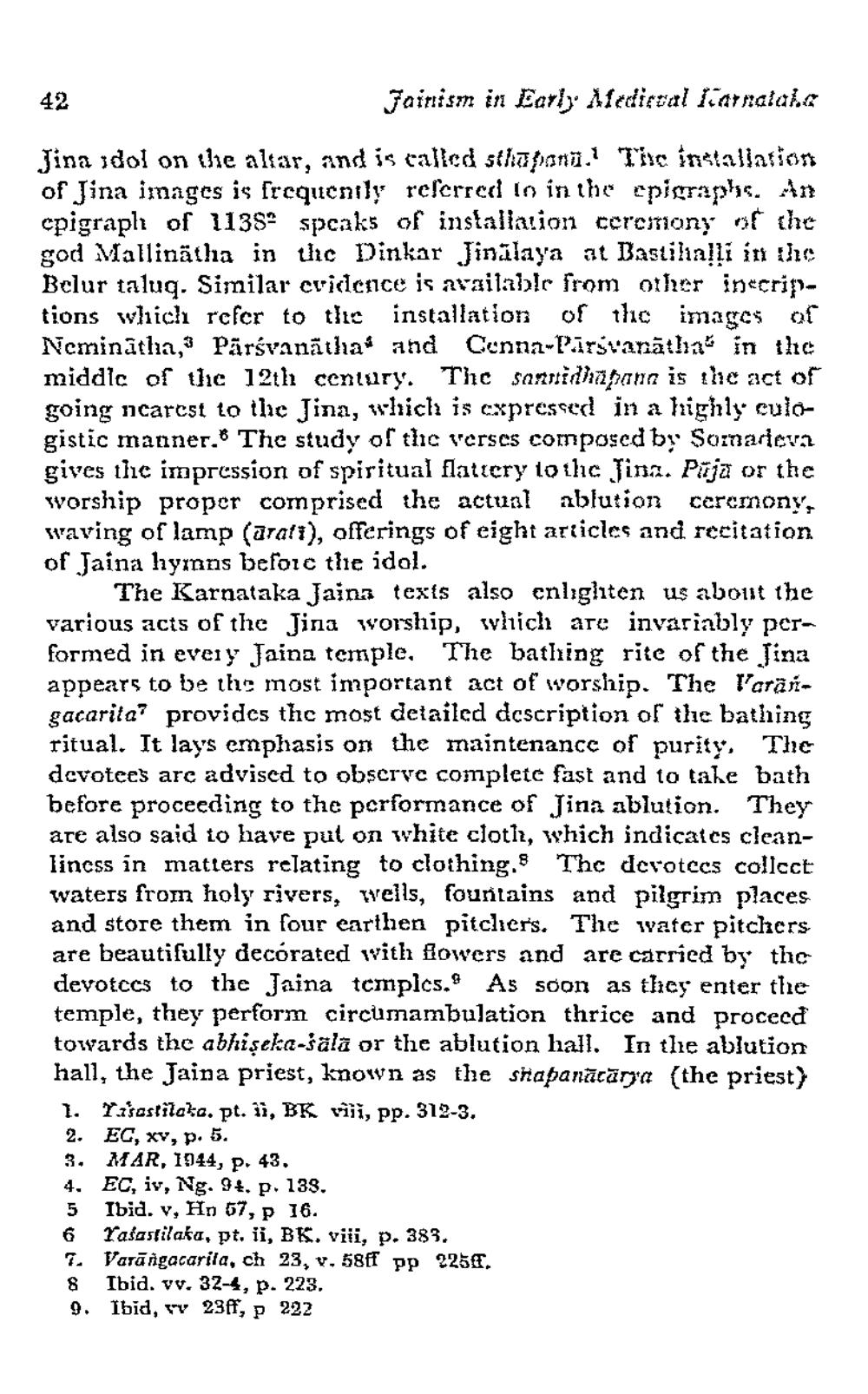________________
Jainism in Early. Afedistal liarnalal.ca
Jina dol on the altar, and is called sthaponi. Tisc installation of Jina images is frequently referred to in the epigraphis, in cpigraph of 113$* speaks of installation ceremony of the god Mallinätha in thc Dinkar Jinālaya at Bastilialli in the Belur taluq. Similar cvidence is available from other in«crintions which refer to the installation of the images of Nominātha, Pārsvanātha and Conna-Pārsvanātha in the middic of the 12th century. Thc sannidhapana is the act of going ncarcst to the Jina, which is cxpressed in a highly culogistic manner. The study of thic verses composed by Somarieva gives the impression of spiritual flaticry to thc Jina. Paja or the worship proper comprised the actual ablution ceremony, waving of lamp (aralt), offerings of eight articles and recitation of Jaina lynnns before the idol.
The Karnataka Jaina texts also enlıgliten us about the various acts of the Jina worship, which are invariably performed in every Jaina temple. The bathing rite of the Jina appears to be the most important act of worship. The l'araigacarita? provides the most detailed description or the bathing ritual. It lays emphasis on the maintenance of purity, The devotees are advised to observe complete fast and to take bath before proceeding to the performance of Jina ablution. They are also said to have put on white clothr, which indicatos cleanliness in matters relating to clothing. 8 Thc derotecs collcct waters from holy rivers, wells, fountains and pilgrim places and store them in four earthen pitchers. The water pitchers are beautifully decorated with flowers and are carried by the devotces to the Jaina tcmplos. As soon as they enter the temple, they perform circumambulation thrice and proceed towards the abhişeka-sala or the ablution hall. In the ablution hall, the Jaina priest, known as the shapanācārya (the priest) 1. Tisestiloka. pt. ii, BK viji, pp. 312-3. 2. EC, xv, p. 5. 3. MAR, 1944, p. 43. 4. EC, iv, Ng. 94. p. 133. 5 Ibid. v, Hn 57, P 16. 6 rašastilaka, pt. ii, BK. viii, p. 383. 7. Varāngacarita, ch 23, v. 58ff pp 2258. 8 Ibid. vv. 32-4, p. 223. 9. Ibid, vv 23ff, p 222




